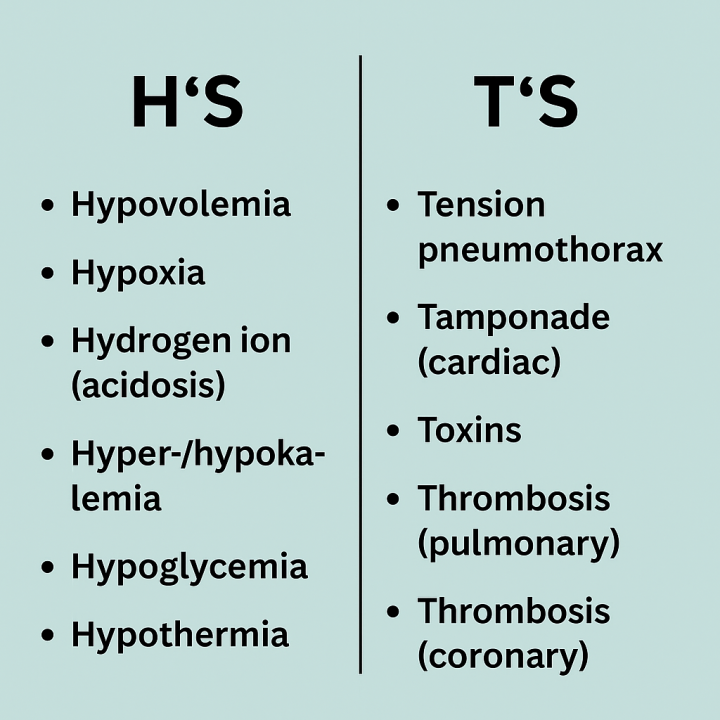Advanced Cardiovascular Life Support (ACLS) involves critical thinking and fast action—especially during cardiac arrest scenarios. A key part of any ACLS algorithm is identifying and treating reversible causes of cardiac arrest, famously known as the H’s and T’s. But let’s be honest: under stress, recalling a list of 10 medical conditions isn’t easy. Here’s how you can make remembering them second nature.
What Are the H’s and T’s of ACLS?
These are the most common reversible causes of pulseless arrest (asystole or pulseless electrical activity):
The 6 H’s:
- Hypovolemia
- Hypoxia
- Hydrogen ion (acidosis)
- Hyper-/hypokalemia
- Hypoglycemia (optional, but helpful to know)
- Hypothermia
The 5 T’s:
- Tension pneumothorax
- Tamponade (cardiac)
- Toxins
- Thrombosis (pulmonary)
- Thrombosis (coronary)
Mnemonics That Actually Work
Mnemonics are a lifesaver in emergency medicine. Try these to commit the H’s and T’s to memory:
🧠 For the H’s:
“Hyped High Schoolers Have Huge Heart Hopes”
- Hyped = Hypovolemia
- High = Hypoxia
- Schoolers = Hydrogen ion (acidosis)
- Have = Hyper-/hypokalemia
- Huge = Hypoglycemia
- Heart Hopes = Hypothermia
🧠 For the T’s:
“The Terrible Things That Threaten”
- The = Tension pneumothorax
- Terrible = Tamponade
- Things = Toxins
- That = Thrombosis (pulmonary)
- Threaten = Thrombosis (coronary)
Memory Tips for Real Scenarios
- Use a mental checklist: When a patient is in PEA or asystole, run through the H’s and T’s before making assumptions.
- Pair them with symptoms: For example, flat neck veins? Think hypovolemia. Distended neck veins? Think tamponade or tension pneumo.
- Practice in simulations: Repetition in low-stress settings helps you perform under high-stress conditions.
Why It Matters
Knowing the H’s and T’s isn’t just about passing a test. It’s about keeping your cool when it counts most—during a code. By making these causes second nature, you improve the chances of identifying a reversible condition and saving a life.


